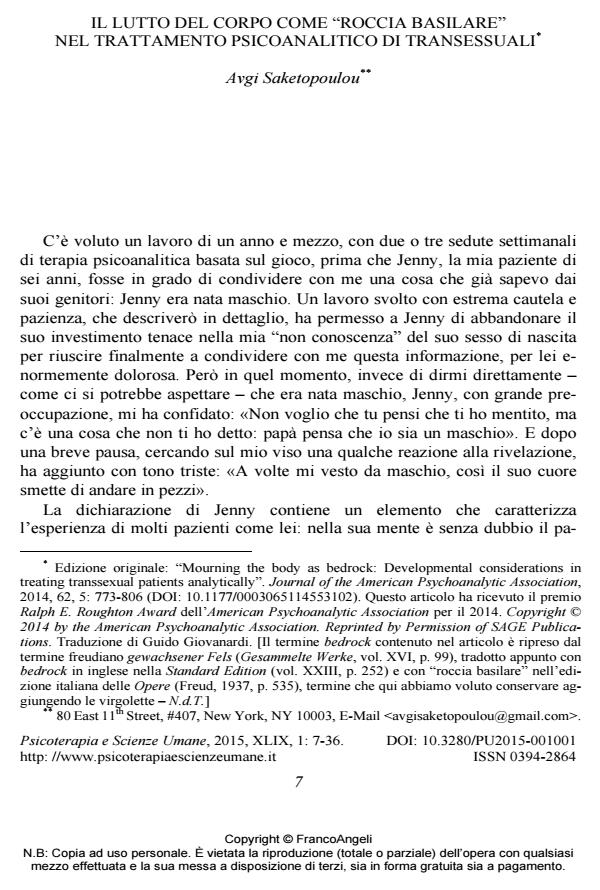Mourning the body as bedrock: Developmental considerations in treating transsexual patients analytically
Journal title PSICOTERAPIA E SCIENZE UMANE
Author/s Avgi Saketopoulou
Publishing Year 2015 Issue 2015/1
Language Italian Pages 30 P. 7-36 File size 346 KB
DOI 10.3280/PU2015-001001
DOI is like a bar code for intellectual property: to have more infomation
click here
Below, you can see the article first page
If you want to buy this article in PDF format, you can do it, following the instructions to buy download credits

FrancoAngeli is member of Publishers International Linking Association, Inc (PILA), a not-for-profit association which run the CrossRef service enabling links to and from online scholarly content.
The concept of massive gender trauma, a clinical syndrome arising at the intersection of the misgendering of transgender patients and the anguished experience of the natal body, is introduced. Psychoanalysts have become increasingly aware of the complex interactions between psyche, soma, and culture, and of the psychic risks inherent in misgendering. However, patients’ body dysphoria is often left unaddressed even by analysts who work within gendered experience. Through a detailed account of work with a five-year-old trans girl (female-identified, male-bodied), the developmental implications of the natal body’s not becoming sufficiently mentalized are tracked and explored. Attention to unconscious fantasy and its transformations shows the importance of helping transgender patients whose bodies are a source of suffering to be able to psychically represent their pain as a critical step in the process of a psychologically healthy sexual transition.
Keywords: Gender, misgendering, body dysphoria, unconscious fantasy, transgender
- Trans-narrative psicoanalitiche Andrea Crapanzano, in Ricerca Psicoanalitica /2024
DOI: 10.4081/rp.2024.900 - Corpo e diniego: l'enigma transgender Anna Maria Nicolò, Laura Accetti, in PSICOTERAPIA PSICOANALITICA 1/2022 pp.29
DOI: 10.3280/PSP2022-001003
Avgi Saketopoulou, Il lutto del corpo come "roccia basilare" nel trattamento psicoanalitico di transessuali in "PSICOTERAPIA E SCIENZE UMANE" 1/2015, pp 7-36, DOI: 10.3280/PU2015-001001